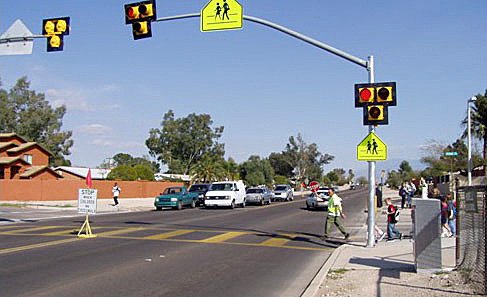Residents of the Woody Creek and Ironwood neighborhoods in Snoqualmie have been calling for a full traffic signal to be installed at the intersection of Fisher Avenue Southeast and Snoqualmie Parkway for more than 10 years.
Despite previous plans and agreements, nothing has been constructed.
Now the city is planning to implement a pedestrian-activated signal, a system that is a part of every full traffic signal on the Parkway, to address traffic and safety concerns for pedestrians who want to cross the road safely.
Monica Lowney, a resident of the Woody Creek community, said the desire for a traffic signal at that intersection was born out of concern for safety and for ease of access in and out of Fisher Creek Park and the surrounding neighborhoods.
“It’s really a safety issue, people are having difficulty getting out to the parkway,” Lowney said. “We’ve even had people parking on the Ironwood side and running across the parkway. We must have crosswalks.”
Lowney and other residents want a full traffic signal at the intersection, but based on speed and traffic surveys done by transportation consultants Fehr and Peers on Nov. 12, the intersection does not qualify for one.
The studies were based on the standards of the Manual on Uniform Traffic Control Devices (MUTCD), a standard used nationwide that governs traffic signs and road markings.
According to the manual, in order for a full traffic signal to be justified at an intersection, that location must meet one of nine requirements. These requirements, referred to as “warrants,” include checks for four- and eight-hour vehicular volume, pedestrian volume, crash history and school crossings.
However, even if one of the warrants was met, the city would not be required to install a traffic signal.
According to the city and the traffic signal warrant analysis done by Fehr and Peers, none of the warrants were met.
After ruling out a traffic signal, the city looked at another option that would create a similar effect, a pedestrian-activated signal. In the MUTCD, this type of installation can be considered if a location does not meet any of the signal warrants.
Kamal Mahmoud, project engineer, explained how the pedestrian signal works.
“It’s got a red phase and a green phase. So if a pedestrian wants to cross a street they push the button at the intersection and it will flash red and cars will see it and stop. You can cross the street safely. It’s on both sides of the street along with a cross walk,” Mahmoud said.
The city chose the pedestrian signal as an alternative plan because of high speed traffic on the parkway, a lack of other signalized pedestrian crossings nearby, and pedestrian crossing demand created by the bus stop, Fisher Creek Park, and the homes on both sides of the road.
Dan Marcinko, director of Parks and Public Works, said the pedestrian activated signal and markings on the road will increase the safety for people trying to get across the parkway.
“When we do put the pedestrian activated signal in at Fisher that will make it much safer for the children and whoever is crossing the four lane highway,” Marcinko said. “It will be in compliance with MUTCD with all our , our pavement markings, everything.”
The city is nearing completion of their signal design and will be applying for grants in 2016 to help fund this project.
“The grants are due between March and June,” Mahmoud said. “We don’t find out if we get them until close to the end of the year, November-ish, and then once that happens we will start planning on the construction season.”
The city’s comprehensive plan states that a full traffic signal at Fisher Avenue Southeast and Snoqualmie Parkway will be built by 2032 when the area behind the Woody Creek neighborhood is annexed, but residents of the Woody Creek and Ironwood communities hope they get a solution sooner than that.


